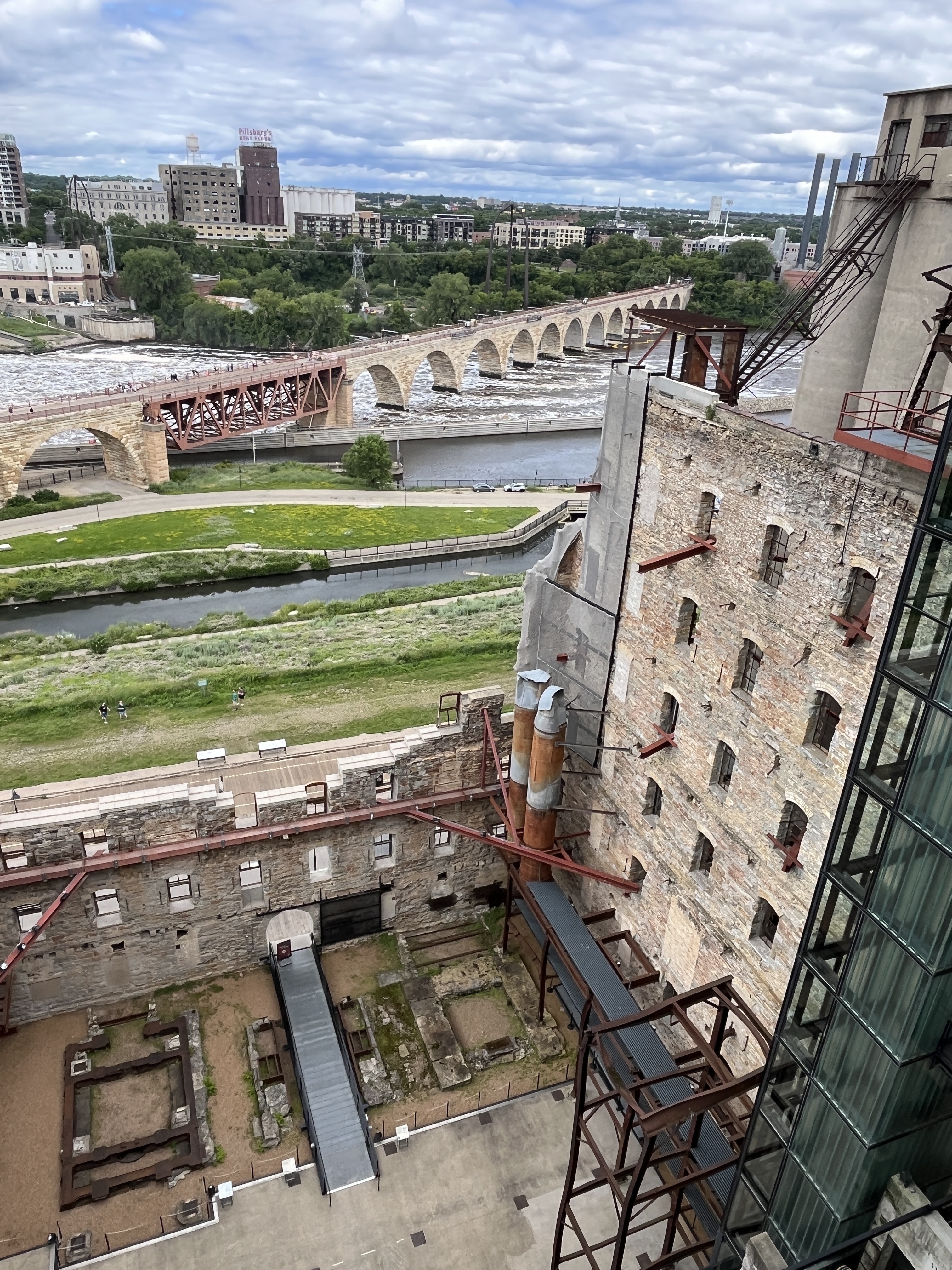The Stone Arch Bridge is set to reopen to pedestrians and cyclists later this summer, several months ahead of schedule.
City and state officials will officially kick off the span’s next chapter at a family-friendly Aug. 9 ribbon-cutting ceremony, but at least one (anonymous) source says it could quietly reopen as soon as Monday. Crews should finish all remaining work by the end of August, according to the East Bank Neighborhood Partnership.
East Bank residents and officials hailed the Minnesota Department of Transportation and general contractor Kraemer North America for making quick work of the $38.5 million project, which was originally expected to continue into the winter, and keeping locals updated throughout the process.
“The state highway department has been great,” Ward 3 Council Member Michael Rainville said in an interview. “They’ve held outreach meetings and answered every question I’ve had.”
The relatively mild winter may have helped workers stay ahead of schedule on the painstaking reconstruction effort, which saw workers replacing stones and repointing mortar largely by hand in addition to upgrading lighting and drainage, Rainville said.
It’s also true that “contractors are getting really good when they bid to protect themselves on project length,” he added, so they may have been aiming to finish earlier than expected from the outset.
“The Stone Arch Bridge is such an important part of the social fabric of the Third Ward,” Rainville said. “It has been a long two summers — almost two full summers that this amenity wasn’t available to us.”
The ahead-of-schedule end to the Stone Arch Bridge project stands in sharp contrast to MnDOT’s 3rd Ave./Central Ave. bridge reconstruction, which completely closed the nearby span for more than two years and ended many months behind schedule, local resident and former Nicollet Island - East Bank Neighborhood Association president John Larkey said in an interview.
The Central Ave. bridge project “ran into really serious issues,” including supply chain problems exacerbated by the COVID-19 pandemic and historic high water on the Mississippi River, Larkey said.
That was frustrating for East Bank residents who relied on the bridge to cross the river and took an underrated downtown viewpoint — “the views off Central are even better [than Stone Arch], especially at sunset” — out of commission for multiple warm seasons, he added.
The smooth finish to the Stone Arch Bridge reconstruction means locals and tourists can travel and snap selfies along the full span for at least a few more months of tolerable weather.
Like the Central Ave. reconstruction, but unlike many other recent road projects around Minneapolis, the state of Minnesota will bear the cost of the project and avoid saddling city or Hennepin County residents with a disproportionate share, Rainville said.
“Thank God that’s a state-owned bridge and not a city-owned bridge,” he said.
That wasn’t always the case. Following a period of disuse after it closed to passenger rail traffic, the Hennepin County Regional Railroad Authority took control of the Stone Arch Bridge in the late 1980s. One commissioner pushed for a new platform alongside the historic span to carry a proposed light rail line, leaving the bridge’s fate “very much up in the air,” said Katie Fournier, an EBNP board director and former aide to Donald M. Fraser, the mayor of Minneapolis at the time.
“The mayor’s office and various other entities were quite alarmed by this prospect,” Fournier said.
Saving the bridge for pedestrian traffic — and revitalizing the city’s deindustrialized riverfront — meant transferring ownership to the state. State Rep. John Sarna, who represented the area for nearly 25 years in the late 20th century and died in 2021, sponsored legislation to authorize the transfer.
The Stone Arch Bridge could become “the prize of Minneapolis,” Sarna told the Star Tribune in 1992. “[It] is a special place … the only spot in Minneapolis where you can look around you and see our beginnings.”
Sarna’s effort was “in my view, the greatest grassroots victory in the city’s history and truly the catalyst of the redevelopment of [its] riverfront,” former Sarna aide Joe Biernat said in an email. “No doubt everyone now realizes what a brilliant initiative it was to save the bridge from the insidious thought of light rail.”
When the bridge opened to pedestrian traffic in the early 1990s, neighborhood groups organized a parade that featured Sarna and his wife in a horse-drawn carriage, Biernat said.
Rainville attended that event dressed as Father Hennepin, one of the first Europeans to set foot in the indigenous lands that would come to be known as Minnesota. It’s unclear what sort of “pomp and circumstance” MnDOT has planned for the Aug. 9 ceremony, but Rainville wouldn’t mind reprising his role.
“Every time the phone rings, I’ve been hoping it’s the highway department,” he said. “I haven’t given up.”








